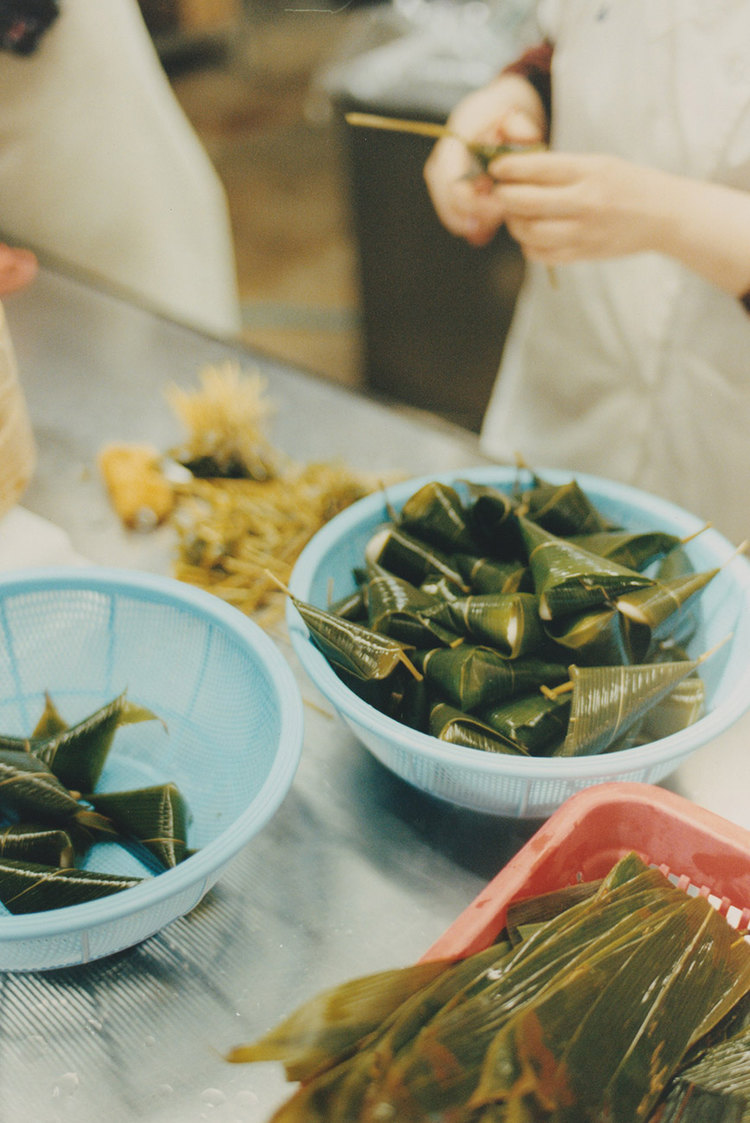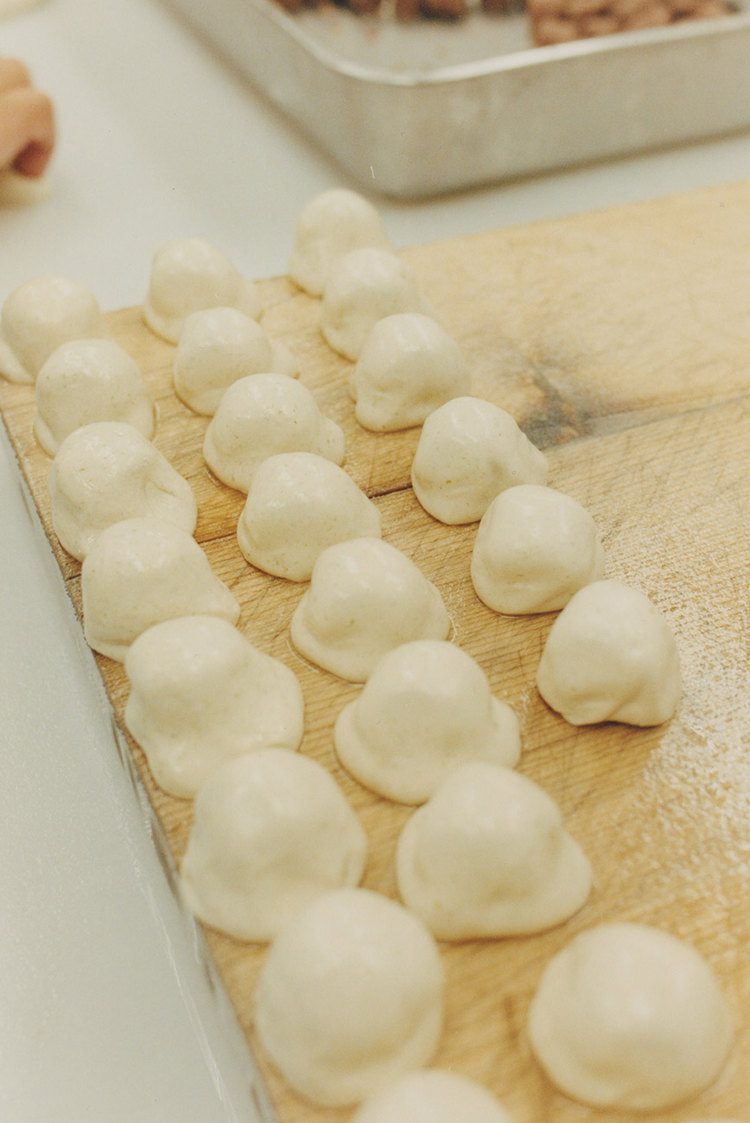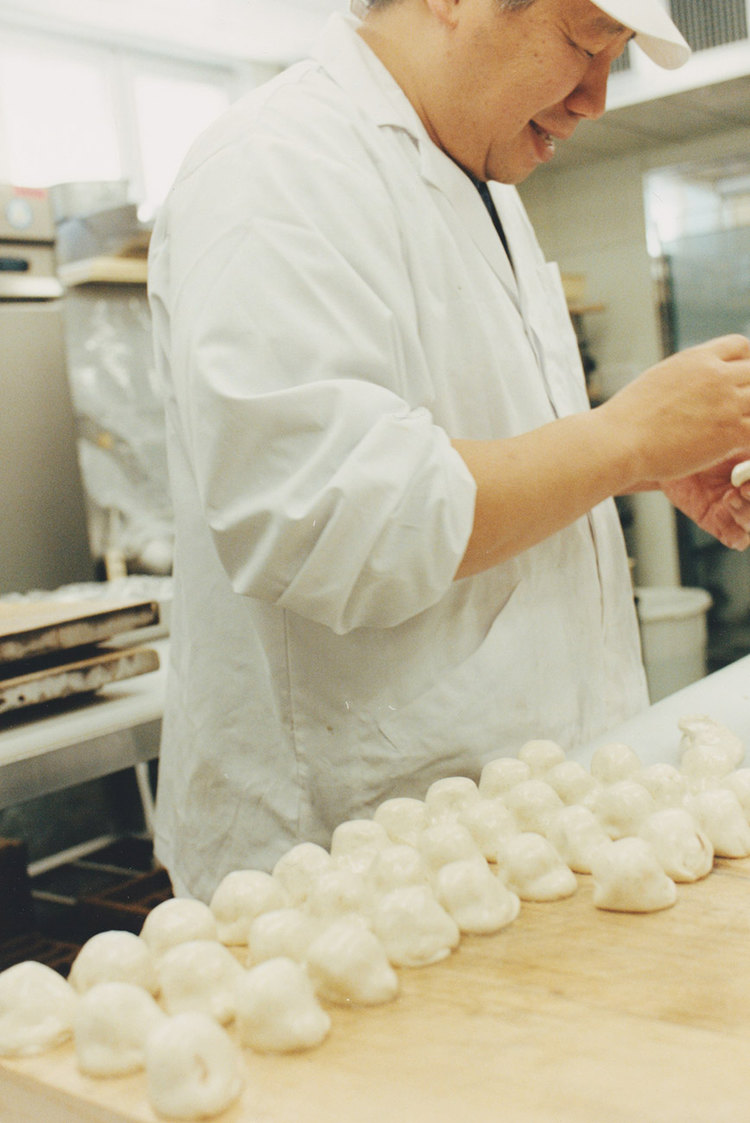
Interview with Fu Ka: Never underestimate the quality of knowledge gleaned from your hands.
One of Owariya’s specialties is Rikyu Soba, a hot soba soup with two kinds of “Fu,” a wheat gluten resembling synthetic meat, developed as shojin ryori, a diet suitable for monks. It comes to us from Fuka, a well-established producer of fu, who has a deep history in Kyoto that includes serving the Imperial Palace. We talked to Shichiro Kobori– the seventh generation of Fuka– about their traditional approach.

When you pass through the noren curtain through the Machiya, you view Fu-manju ( red bean cakes with Fu ) being wrapped with bamboo leafs. Continuing onwards, the atmosphere changes as you pass through an automatic door into a sparkling clean factory. “All the craftsmen here can take care of the day’s work” Kobori-san explains. “We will make more than thirty kinds of raw fu according to the various orders from the city’s restaurants. What first caught my eye was a stack of wooden raw fu molds.
I see you still use wood?
“A tree is similar to a human blood vessel and has a water passage. With other materials, the fire is only in the place where the steam hits. It doesn’t go in, so you have to use wood. If the wood mold isn’t soaked in water, it won’t evenly catch fire. “

Water is very important for Owariya. It’s important for Fuka as well?
“Our shop uses water pumped from seventy meters underground. Raw fu made in Kyoto is made from Kyoto water. The water retention rate of raw fu is 60-70%, so you can’t make delicious food without using quality water.
Besides its natural strong quality, well water has a consistent temperature of approximately 15 degrees Celsius, making it quite suitable for producing raw fu. I think it makes sense to use water at a constant temperature to produce ingredients in ideal fermentation conditions. It requires a considerable amount of water to extract the gluten used for fu.

Fu has a long history, and it is said that it came from China as a Zen Buddhist ingredient during the Kamakura period, and became the current form of gluten with glutinous rice added in the middle of the 18th century.
At Fu Ka, the ratio of gluten depends on the product, making fine adjustments indispensable even as early as the fermentation stage. The progress of fermentation varies from day to day, and it is difficult to control fermentation even when conditions are adjusted. You have to keep close attention. ” (2)

It’s a process that machines can’t do.
“I use a machine only for kneading. I could make products with mechanized efficiency, but some nuanced flavor can be lost. I depend on my senses: the aroma and appearance of fermentation, feeling it by hand… more than clock timers, fingertips are even better at suggesting when something is ready. Never underestimate the quality of knowledge gleaned from your hands.”
Recently, Owariya created the Takara Nabe (“Treasure Soup”), a hot soup designed for home cooking with prepared ingredients. Fu Ka’s “Temari Fu” adds both some color and flavor to our soup. This Temari Fu is handmade by Kobori-san’s mother, Akiko. The raw pink-dyed fu is wrapped around a small fu while being stretched into a thread with fingertips. Kobori-san explains, “When my hands are warm, the thread breaks, so my father taught us to immerse our hands in ice water.” The end of the year is very busy for Fu Ka, and consequently Kobori-san’s wife and mother work side by side.

What are the joys of a family business?
“I love doing it the old-fashioned way, Akiko Kobori comments. “It’s delicious and our customers are very happy with it.”
Kobori-san says, “”I think that raw fu might not be a necessary cooking ingredient. It is possible that a time will come when raw fu will not be utilized. It is my hope restaurants continue to use it.”
Kobori-san’s candor about the fortunes of raw fu emboldened me to continue the tradition via our collaboration.Raw fu made in this old-fashioned way, utilizing sensory and learned knowledge makes it undeniably a traditional craft. His fu adds a dash of tasty color to Kyoto cuisine, ably conveying the city’s rich culinary culture. I’m often reminded of that and grateful to Kobori-san’s craftsmanship when our patrons order Rikyu soba at Owariya.

Rikyu soba has two kinds of fu, including Rikyu: marinated raw fu that is deep fried, as well as the raw fu , Yuba tofu and a hint of yuzu.



